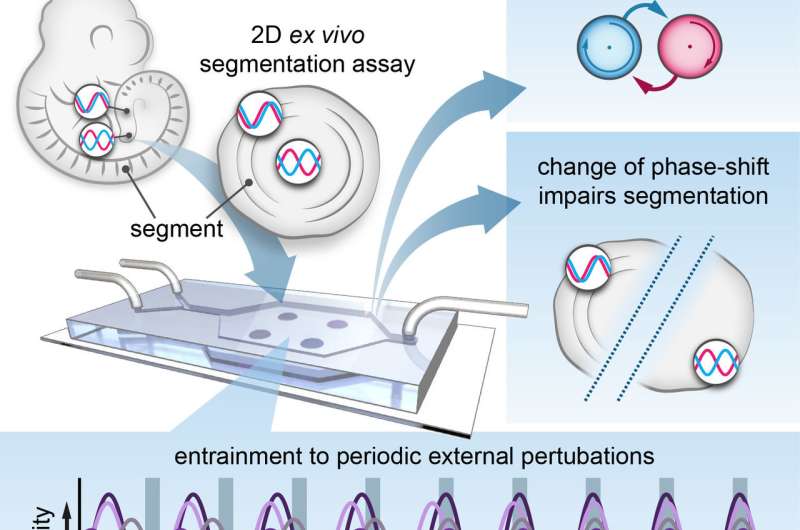Synchronised waves control embryonic patterning

During an embryo's journey from a single cell to a complex organism, countless patterning processes make sure that the right cells develop in exactly the right location and at the right time. Cells activate specific genes in a rhythmic manner during this early development, resulting in waves of activation sweeping through the embryo. Scientists at EMBL now show that the rhythm between two specific sets of waves—controlled by the Wnt and Notch pathways—enables the formation of new segments. They have reported the results of their study in Cell.
The formation of new segments in a mouse embryo is controlled by a molecular clock. Two key signalling pathways in this process are called Wnt and Notch. Both show periodic pulses of activity, which occur at the same pace as segments form. Now, scientists from the Aulehla and Merten labs at EMBL show that the timing between the two waves is responsible for segmentation. At a specific time point, the Wnt and Notch waves get in sync and overlap, coinciding with the formation of a new segment.
To test what happened when the two waves were not in sync, the research team developed a new experimental strategy to control the rhythm of Wnt and Notch pulses. Katharina Sonnen, an EMBL postdoctoral researcher working in both the Aulehla and Merten labs, developed a system that enabled her to synchronise the waves to an external rhythm. Strikingly, a new segment was only made when the Wnt and Notch waves synchronised. Changing their relative timing prevented segment formation.

Vital information in dynamic signals
"It's the first time that we've been able to directly test the importance of timing in developing systems," says EMBL group leader Alexander Aulehla, who led the work. "This shows that vital information for the development of an embryo is encoded in dynamic, oscillating signals. In the future, this approach could be used to test the importance of rhythm in other contexts—for example in stem cells and disease states, where the same signaling pathways are in place."
More information: Modulation of phase-shift between Wnt- and Notch-signaling oscillations controls mesoderm segmentation, Cell (2018).
Journal information: Cell
Provided by European Molecular Biology Laboratory



















